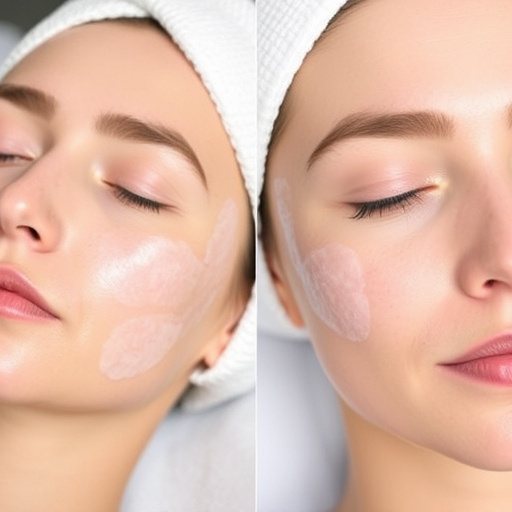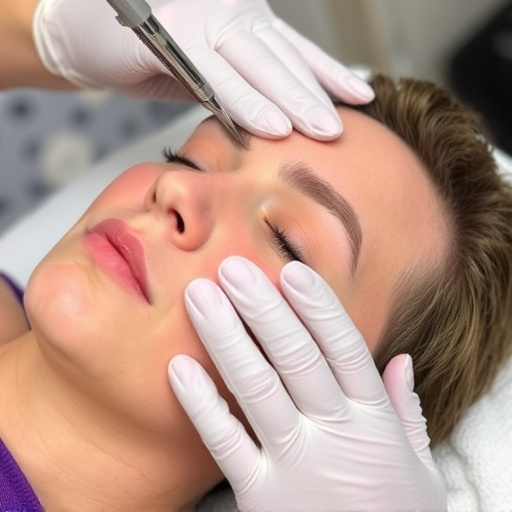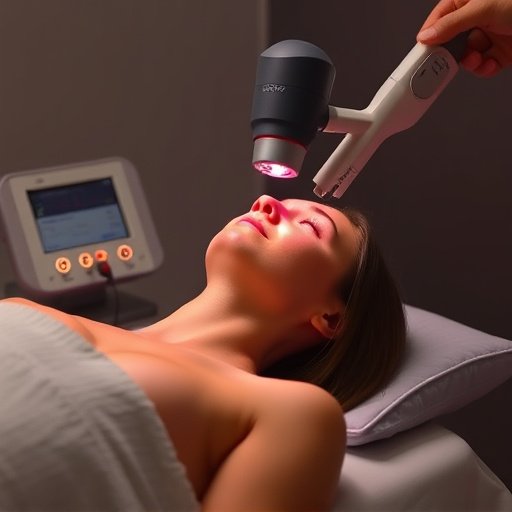Environmental factors, especially humidity and temperature, significantly impact skin health. Humid settings may reduce sebum production and comedone formation, while dry environments increase irritation risk. Microneedling could be more effective in low-moisture climates. Seasonal changes affect comedone (acne) extraction needs: warmer, humid months require more frequent extraction; colder, drier air reduces acne outbreaks. Understanding these patterns is vital for adjusting skincare routines and treatments to maintain clear skin year-round.
Seasons play a surprising role in your skin health, impacting comedone extraction frequency. This article explores how environmental factors like humidity and temperature changes directly influence acne formation and comedone extraction needs. We break down seasonal patterns and offer insights on achieving clearer skin throughout the year. Discover how to tailor your skincare routine to nature’s fluctuations, understanding the connection between seasons and your skin’s unique requirements for effective comedone extraction.
- Environmental Factors: Humidity and Acne's Connection
- Temperature Changes: Skin's Response and Comedones
- Seasonal Patterns: Extracting Insights for Clearer Skin
Environmental Factors: Humidity and Acne's Connection

Environmental factors play a significant role in our skin health, particularly when it comes to acne and comedone extraction. One key aspect is humidity, which has a complex relationship with our skin’s oil production. In more humid environments, our skin tends to produce less sebum, the natural oil that can lead to clogged pores and acne if excess builds up. This might seem counterintuitive, as one would assume higher moisture in the air would increase oil secretion. However, when our skin is constantly exposed to high humidity, it adapts by producing fewer oils, potentially reducing the frequency of comedone extraction procedures.
On the other hand, dry environments can also impact acne formation. Dry skin may become more prone to irritation and inflammation, which are known triggers for acne outbreaks. This can lead to a need for more frequent facial treatments, including comedone extraction, to manage and prevent acne. Additionally, procedures like microneedling therapy, which stimulates collagen production and skin tightening, might be more effective in dry climates due to the skin’s increased receptiveness to such treatments during periods of lower moisture levels.
Temperature Changes: Skin's Response and Comedones

Temperature changes play a significant role in how our skin reacts and, consequently, in the frequency of comedone extraction procedures. As the weather shifts from warm to cooler seasons, or vice versa, our skin’s natural balance can be disrupted. This shift often leads to adjustments in skin hydration levels and sebum production. During colder months, lower humidity levels in the air tend to dehydrate our skin, making it tighter and more prone to dryness. In response, the body increases sebum production to create a protective barrier, which can result in clogged pores and an increased need for comedone extraction treatments.
In contrast, warmer seasons bring higher humidity levels, encouraging skin hydration but also stimulating excess oil production. This change can lead to a buildup of sebum, dead skin cells, and other impurities within the pores, further enhancing the formation of comedones. Regular facial treatments, such as chemical peels or medical spa services specializing in comedone extraction, become even more crucial during these periods to maintain clear, healthy skin. By addressing these seasonal skin changes, individuals can ensure optimal skin care and reduce the frequency of comedone-related issues.
Seasonal Patterns: Extracting Insights for Clearer Skin

Seasonal changes can significantly impact your skin’s health and the frequency of comedone extraction needed. As we transition through spring, summer, autumn, and winter, various environmental factors influence our skin’s natural balance. For instance, warmer months tend to increase oil production due to higher temperatures and humidity, making it easier for impurities like sebum and dead skin cells to clog pores, thereby requiring more frequent comedone extraction. Conversely, drier air during colder seasons can strip away essential moisture, leading to dryness and potentially lessened acne outbreaks, reducing the need for such procedures.
Understanding these seasonal patterns offers valuable insights into personal skincare routines and professional facial treatments, including microneedling therapy and targeted acne treatments. By recognizing how your skin reacts throughout the year, you can adjust cleaning and extraction habits accordingly. This proactive approach to skincare ensures that your face remains clear and healthy, promoting a radiant complexion regardless of the season.
Understanding how seasons impact your skin’s health is a valuable step towards achieving clearer, healthier skin. By recognizing the connection between environmental factors like humidity and temperature changes, you can adjust your skincare routine accordingly. This seasonal approach to comedone extraction may help reduce the frequency of extractions needed, promoting a more balanced and resilient complexion year-round.














